- Register
- Log in to Tune-In
- Wishlist (0)
-
Shopping cart
(0)
You have no items in your shopping cart.
Beatles News
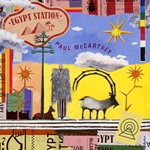
He may have just turned 76, but Paul McCartney is clearly not ready to retire.
The Beatle has just released two new singles and announced a forthcoming album.
That's right, Macca is back. "I Don't Know" and "Come On To Me" dropped Wednesday.
His album, "Egypt Station," will be out September 7.
It's his first in five years and McCartney recently spoke to BBC 6 Music about continuing to make music. He said that unlike some people his age, he doesn't disparage today's music.
"I listen to people, and I think there's a lot of good stuff going on, myself," he said. "But no, a lot of people my generation will say, 'Oh, music's not as good as it used to be.' But I always say, 'No, that's what our parents said.'"
He said he enjoyed working with Kanye West on the single "Four Five Seconds," which also featured Rihanna.
McCartney will be keeping busy performing for the next few months, including at Austin City Limits in Austin, Texas, in October, he said. But he did talk to 85-year-old music legend Willie Nelson about retiring. "And he says, 'Retire from what?,'" McCartney said. " And I think that just says it. Retire from what?"
Source: Lisa Respers France, CNN

The Beatles legend confirmed details of his new album release earlier today.
Paul McCartney has recalled how George Harrison would get The Beatles out of doing things they didn’t want to do.
The Beatles bassist announced earlier today (June 20) he is set to release his first solo album in five years in September.
Speaking to Gordon Smart on Radio X, McCartney said: “George would often be the one – when we’d be having to do something we didn’t fancy – who would just go, ‘Why we fucking doing this? What the fuck? What the fuck’s this? I don’t fucking want to do this!’ And then it was like, ‘Yes!’
“You’d maybe say, ‘George, I think we have to do it,'” he continued. “‘I’m not fucking doing it!’ and you’d be going, ‘Yes, great!’ so none of us have to do it. He’s got us off it! And it was brilliant, always good to have one them around, you know? I have to do that for myself now.”
Source: Rhian Daly/nme.com

The beatles commemorated in India before recording "The White Album."
A 50th-anniversary reissue of the 1968 White Album by The Beatles has been confirmed by Paul McCartney after months of speculation.
The double album, which is actually eponymously titled although widely referred to for its plain white cover designed by artist Richard Hamilton, was made after about 30 rough demos had been recorded at lead guitarist George’s Harrison’s suburban home in Esher, near London, in May, 1968. Many of the songs were written during the band’s stay in India to study meditation earlier that year and the happy-go-lucky sessions went well. The quartet later worked them up in the London studio in a process that was far less harmonious. Most of the demos became finished works that made the record, although a few were held over to Abbey Road and a few ended up on solo albums.
Source: Mark Beech/forbes.com
details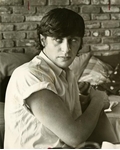
He was The Beatles’ original drummer, the one that got replaced by Ringo Starr and missed the ride to music immortality. Which might also make him the disgruntled Beatle.
But was Pete Best the best-looking Beatle?
RELATED: John Lennon’s last years in Palm Beach
Recently discovered in The Palm Beach Post’s archives is this November 1965 photo by Miami News photographer Charles Trainor. The Miami News was the Post’s sister paper. At the time, Best was spending the weekend with a disc jockey in Coconut Grove. It was about one year after the Fab Four conquered America, visited the Sunshine State and performed in Miami Beach on “The Ed Sullivan Show.”
Tastes differ — some prefer Paul McCartney, the “cute one,” or the spiky appeal of John Lennon. Some even prefer the offbeat charms of George Harrison and Starr.
Source: Larry Aydlette - Palm Beach Post Staff Writer
details
It was 48 years ago in April that Paul McCartney announced the breakup of the Beatles, and even though nearly half a century has passed since then, interest in the greatest band of all time remains high.
The 2000 “1” album, a compilation of all of the Beatles number one singles, itself went to No. 1 — 30 years after the band broke up. Millions of fans, and not just baby boomers, listen to Beatles songs on the online streaming service Spotify every month.
There are dozens of books written about the legendary rock band, examining their rise, their influence on the zeitgeist of the ’60s, and why they have retained their appeal all these years later. No music act has been the subject of more television documentaries than the Beatles.
Source: John Harrington and Charles Stockdale/247wallst.com
details
Primary school-age kids are being given lessons in Beatlemania at one of the most unusual school classrooms in Britain.
The award winning Beatles Story museum in Liverpool said Monday its Discovery Zone, a fun educational area for primary schools, has been given an exciting new upgrade to educate children on The Beatles' early lives, rise to fame, music and their connection to Liverpool.
The new investment into the educational facilities at the Beatles Story has seen a full refurbishment of the Discovery Zone, incorporating exciting new features linking the story of the Beatles, their early lives and rise to fame with key areas of Britain's National Curriculum for primary schools.
Children learn about the legacy of Liverpool's most famous sons, John Lennon, Paul McCartney, George Harrison and Ringo Starr, through creative play on a giant interactive floor piano, touch-screen interactives and many other fun learning zones, connecting topics geography, history, fashion, technology, art and music.
Top of the list of new features is a new giant interactive floor piano, inspired by the popular film, BIG, children starring American actor Tom Hanks.
Source: (Xinhua)
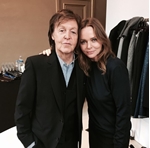
Stella McCartney said she feels “blessed” to have Sir Paul McCartney as a father as she wished him a happy birthday.
The designer posted a picture of the pair on Twitter to mark the Beatles star’s 76th birthday on June 18.
She wrote: “Birthday boy….
“Blessed daughter to have you by my side every step…
“Love you dad x Stella.”
Sir Paul also received birthday messages from the estates of late Beatles stars John Lennon and George Harrison.
Lennon’s account tweeted a black and white image of the singer with the message: “Paul was one of the most innovative bass players that ever played bass.
“Happy Birthday @PaulMcCartney.”
A tweet from Harrison’s account said: “I’d become friendly with Paul, I remember him coming round to my house and I had this guitar, he had a trumpet.
Source: independent.ie
details
Growing up, my dad hated The Beatles. Then again, my dad also hated being a dad and basically opted out of that role. Let it be, as Paul would say. But when you’re a kid with that kind of emotional absence plenty of surrogate dads step in. These men seem to sense their loving expertise is desperately needed; teen girls, for all our haughty skepticism need earnest devotion like we need air. So, my Beatles dad was my choir teacher, a lowkey musical genius named Dana Libonati who, for some reason, taught choir in my tiny hometown of McMinnville, Oregon. Before I met Rob Sheffield I was positive no one on the planet loved The Beatles more than Dana (I’m not being disrespectful, he insisted we call him by his first name).
I mentioned he was a musical genius? Dana used to create his own personal arrangements of Beatles songs designed for four or five parts so my choir could sing them. We did “Gotta Get You Into My Life.” “Can’t Buy Me Love.” “In My Life.” So many more.
Source: Caitlin White/uproxx.com
details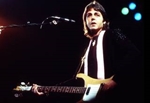
Forty-four years ago this month, former Beatle Paul McCartney and the members of his current band, Wings, arrived in Nashville for a month-long vacation and rehearsal. McCartney and his entourage stayed at a farm just outside Music City owned by famed songwriter Curly Putman Jr. ("D-I-V-O-R-C-E," "Green, Green Grass of Home") and made a visit to the Grand Ole Opry, which, to McCartney's disappointment, had recently moved to Opryland from the location the Liverpool native was anxious to visit, the Ryman Auditorium.
On June 16th, McCartney and his wife Linda were among the audience at a historic Opryland performance featuring longtime partners Dolly Parton and Porter Wagoner, with Parton telling the crowd it's "the last time we'll play together."
Source: Stephen L. Betts/rollingstone.com
details
Sir Paul McCartney will forever be one of the world's most successful and best loved musicians.
He has been a prolific songwriter and performer ever since his teenage days in the Quarrymen in the late 1950s, and shows no signs of slowing down.
We've picked our very favourite Paul McCartney songs (not including his work with The Beatles otherwise we'll be here all day, or Christmas tunes) to make for a perfect Macca setlist...
1. 'Maybe I'm Amazed'
McCartney dedicated this song to his wife Linda, who had helped him get through the break-up of the Beatles. Despite it being one of his best known solo songs, he never actually released it as a single.
Source: smoothradio.com
details
In honor of Paul McCartney’s birthday today (June 18), we look back during the magical time when the Beatles ruled the world and changed the face of music forever.
Enjoy these classic Beatles images!
Source: John Lennon Fan
details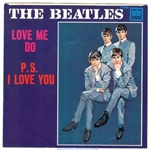
The Beatles – “Love Me Do”
HIT #1: May 30, 1964
STAYED AT #1: 1 week
“Love Me Do” was eight years old by the time it hit #1. A 16-year-old Paul McCartney had written most of the song while skipping school in 1958, with his friend John Lennon helping out on a few parts. The two of them hadn’t even formed the Beatles yet. “Love Me Do” was also the Beatles’ first single; they released it in the UK toward the end of 1962. They recorded three different versions of it with three different drummers, though the one that featured the newly recruited Ringo Starr was the one that ended up coming out. The song only made it to #17 in the UK, but it established the group as something. It was only a beginning.
Source: Tom Breihan @tombreihan /stereogum.com
details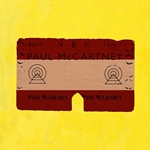
Friday came and went without the new Paul McCartney album a television report said was headed our way, but the Beatles legend continues to drop hints that something big may be announced soon.
This morning, that included tweeting out an image that looks an awful lot like an album cover, featuring what appears to be a red ticket on a yellow background with his name and the letters "N.B.P." on it.
If McCartney is about to release a new album - and if you still feel like speculating, tomorrow (June 18) is his birthday - it would be his first collection of new material since New, in 2013.
McCartney had been hinting at at releasing new music this year, mentioning on his website in January that he was “putting the finishing touches” on a new album.
Source: ultimateclassicrock.com
details
With his big, expressive eyes and lovely compositions that leaned toward the sweeter side of the Beatles' catalog, it's easy to get why Paul McCartney, among his mop-topped mates, was pegged early on as "the cute one." And though he reportedly didn't love that label, he never did shy away from those sillier aspects of his personality guaranteed to raise a smile. Here, in honor of his 76th birthday (June 18), a nostalgic look back at Paul at peak adorable. (Pictured above: pulling faces on his 22nd birthday during a tour in Sydney, 1964.)
Source: Keystone/Getty Images
details
More remarkable than the admittedly poor audio quality of the performance itself is George Drynan’s off-the-cuff interviews with St. John Ambulance attendants and crowd members, all of whom assumed he was a reporter owing to his button-down appearance and professional manner.
On Aug. 17, 1966, amid the din and hullabaloo of what would be the last-ever Beatles concert in Canada, nobody seems to have noticed the middle-aged man in the stands with a reel-to-reel tape recorder. He was George K. Drynan, QC, a day-tripping father of three, war veteran and sedan-owning Rotarian who travelled to Toronto’s Maple Leaf Gardens from Oshawa, Ont., with his wife – the accomplished organist, composer and choirmaster Margaret (Peggy) Drynan – and a family friend. The oldest son, John, handled the driving. Younger son James also attended the show, but had arranged separate transportation.
Source: Brad Wheeler/theglobeandmail.com
details